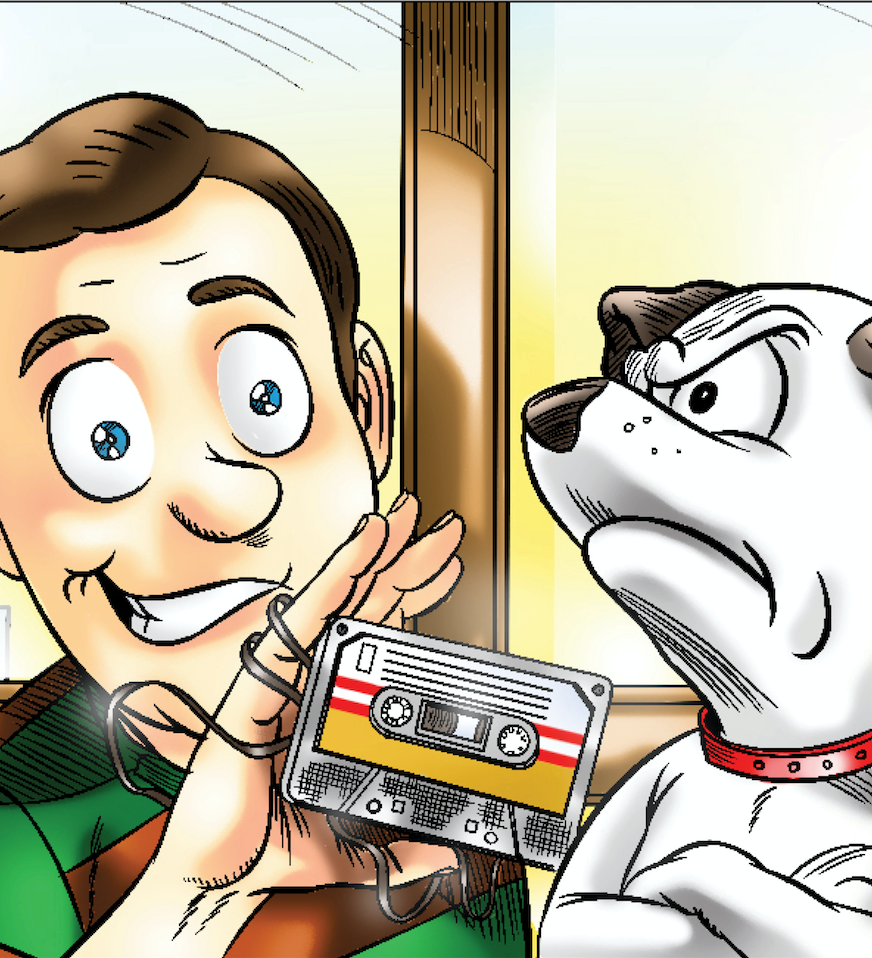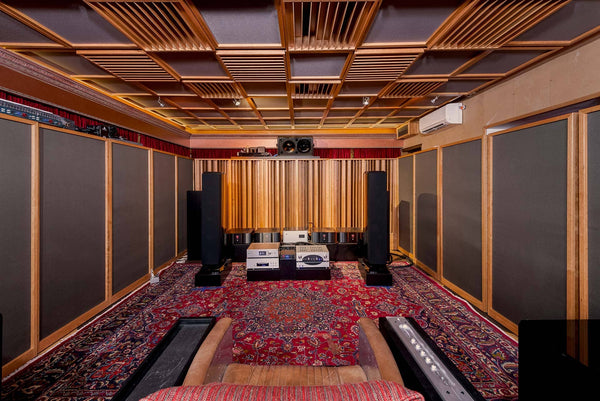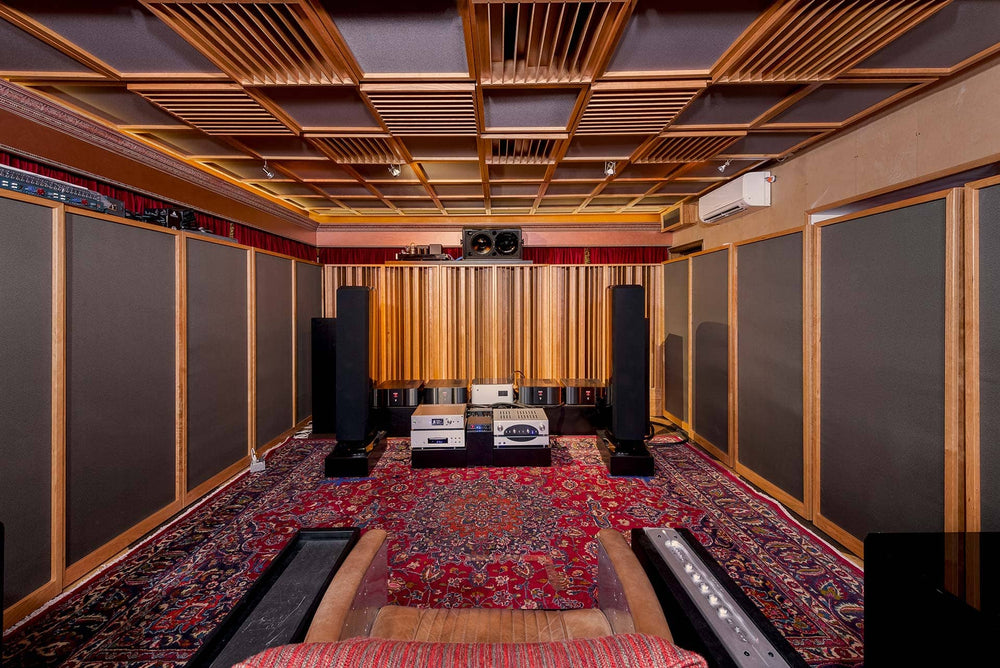Electronic Adjustments
Ok, now that we’ve accomplished the bassic (pun intended, sorry!) steps, we are on the home stretch. These final steps require personal choice/taste as well as some technical adjustments.
In the following sequence, we’ll be looking at sub balance (tech), sub volume level (tech/taste), sub polarity (tech), & sub fine-tuning at the crossover point/level (tech/taste), & crossover techniques (tech/taste)
Now, turn off the main loudspeakers.
Sub balance –
Now that the position/angle of the subs have been determined, we need to get them to operate withe same relative level in each channel. For each sub, choose a similar crossover point – a bit higher in frequency than you think you will be using. For example, if you expect to crossover at 35 Hz or so, choose 45 Hz for the initial balance. Set the sub level at about 1/3 of the total available volume. Check each sub’s output individually. This is best done with a SPL meter, but it can be done by ear. You want to get them as equal in output as possible. When you have their individual acoustic outputs equal/balanced, it’s best to mark or record the volume setting. You’ll be turning the pair up or down shortly, and you want to make equal adjustments if possible.
Initial sub volume level –
Using some music tracks, such as the Brian Bromberg Wood or Wood II recordings (or others that have variable bass notes and that seem to be a well balanced bass recording), raise or lower the subs’ volume equally until the bass response is fairly smooth, not obviously too much or too little bass. We will get to fine adjustments after a few more steps.
Now, turn on the main loudspeakers.
Sub polarity –
This step can dramatically affect the results of the next steps, so it should be addressed at this point. I have found that it is unpredictable depending on many variables in the set-up. We only care about the outcome, not the reasons why.
We want the subs to work with the mains rather than against them. Improper acoustic polarity is an example of the mains & subs fighting against each other. It will result in diminished bass at & near the crossover point.
This aspect should be measured or listened to at the listening seat, not between the subs or elsewhere.
Play some pink noise if you have it. Measure the output in SPL, or if you are using a RTA, look at the crossover point/bass region and note the shape of the response. Then reverse the polarity on both subs and run the test same test again. One or the other polarity will have noticeably less output in the crossover region. That is incorrect – the speakers are out of phase at the crossover point and thereby cancelling the natural acoustic frequency balance of the recording. Note: this test can be performed by ear but it is a bit trickier.
Finally, some subs have infinitely adjustable (variable) polarity. I would start at ‘0’ or ‘180’. Then I might check the response at ‘45’, 90’, & ‘135’. You are looking for the setting that increases the output at the crossover point. You may see a difference or you may not. As before, you are picking the overall best polarity.
The reason we set polarity now is that we could possibly make crossover/level adjustments in the next step that are incorrect, and this would affect the smoothness of the subs/mains integration.
Sub fine tuning – crossover point & volume level –
This step assumes that you are NOT using an electronic crossover. The mains are playing smoothly through their range.
The crossover point on the subs that we were using for the balance test needs to be brought down to a point at which we think we will need to bring in the subs. We will make this final adjustment be ear.
It is critical to note that as you increase the level, you MAY need to reduce the crossover point. Visualize the mains’ response as a straight line. As you increase the bass subs’ bass output, its roll-off will intersect with the mains’ response line at a higher frequency. And vice-versa for the occasions when you turn down the subs’ bass volume.
Sometimes, adjusting sub level slightly is all that is required, but not that often.
In general, do not simply adjust sub volume without remembering that you are also slightly affecting the crossover point. I have encountered numerous sub/main speaker installations that were said not to be integrated smoothly, and when I listened to them, I agreed. Many times, it was an incorrect interplay of the volume and crossover points.
This is a combination of tech info that can serve the music, but only when you – as the owner – exercise your right to have the final call (taste).
This final tweaking of sub level and crossover point may take a bit of time, as you should listen to a variety of your recordings. For example, you don’t want piano lower registers to sound thick. I would mostly address instruments that have contributions in this area.
I definitely would check some recordings with deep bass, but I wouldn’t go for lots of deep bass and subsequently mess up the delicate balance for other instruments that are much more likely to appear in most recordings. This is definitely a matter of taste at this point.
One way to be sure that you have finally settled on the best setting is when you no longer feel the urge to get up and adjust the subs’ level/crossover. If you have followed this info and previous Subwoofery articles about subs, and addressed your set-up accordingly, it will happen! Sometimes it takes days to be sure that it is dialed in, but again, it will happen. And your music will speak to you in a more impactful manner than ever before.
Note – At this point, I often go back to see if the subs are still balanced in output after making the other adjustments. If they are no longer as balanced as they were, then you should rebalance them now, and then make whatever slight level/crossover adjustments as may be required. Also, I always record & mark the ‘final’; settings. That way, a bit later, when I have decided to try a slight adjustment, I have a known reference point. If I do make a slight change, I mark & record that setting as well.
Crossover techniques –
There are those that think that the mains should be crossed over to the subs as well, via an electronic crossover. From a theoretical/technical viewpoint, I agree. It’s just that, for me, I haven’t heard any subwoofer crossovers that are transparent enough in the mids & highs. That’s not to say that it cannot happen – it’s simply that I have never heard it.
And sometimes, for whatever reason, those set-ups seem to be the very ones where the subs/mains integration – and thus the musical engagement, is diminished.
If you have such a set-up and it is working for you in the musical involvement area, congrats! My guiding principle is to only recommend that which I have heard & liked. Doesn’t mean that your set-up is compromised at all – it’s just that I haven’t yet heard a similar one that worked.
Possible pitfalls of electronic eq and/or DSP – plus a true story
I have two main concerns with EQ and DSP;
1 – It’s not a panacea. Some people think that if they get the response relatively flat, or “fix” time arrival and such, that is all it takes. If you wish to use these programs (as I have), don’t even think about it until you have first done all of the basic set-up as I have mentioned. I have referred to this as the organic process rather than the electronic.
2 – Sadly, I’ve heard all too many systems that sounded technically correct, but were utterly boring musically because the owner or system tuner felt that once the measurement goals were achieved, they were done. Not so!
So here’s a story that is related to the concept, at least in the area of execution. Some of you may remember the San Francisco Stereophile Home Entertainment Show in 2003. If so, you may recall the extraordinary and never-again-equaled response that happened in our (Avantgarde-USA, BAT, Running Springs, etc.) demo room. Srajan Ebaen – 6moons.com – wrote about it, as well as Robert Harley in TAS, and others.
As always at the shows where we exhibited, I voiced that system. We had a couple of less-than-pleasant peaks in the boundary-dependent-region (below 300 Hz). Expecting some difficulties, I had brought my Rives PARC (Parametric Adaptive Room Compensation), which is designed to solely address that region.
When I mentioned to Richard Rives Bird that I was bringing it to the show, he offered to tweak it with his computer program. True to his word, when I let him know I wanted him to drop by, he was nice enough to come by and run the program.
Richard had a ton of work to do throughout the show. He didn’t cut short his time, but he based his adjustments on near-perfect measurements. Satisfied with the results, he went on to other projects waiting at the show.
There was no question that the response was very flat now. Technically, it was superb. However, after listening for a while after Richard left, I began to feel that the system was missing a bit of musical involvement. The emotional hook was not quite there.
So the result of the correction was flat response. Unfortunately, after I listened later, my response to the music was similar. Flat.
I should mention that we were only using the PARC in the line from the BAT preamp to the amps driving the BASSHORNS. The amps driving the TRIOS were direct from the preamp.
So I spent another couple of hours building on what Richard had done (LOL – Richard might have had a different description). I didn’t change the frequency of the three cuts he introduced, but did slightly adjust their “q” (width) and the level of their amplitude.
When I was satisfied, I was feeling good about the sound – the music was engaging at all levels and with all genres. I privately wondered if the subsequent measurements would have been as precise. My guess was — probably not.
Here’s the cool thing – We got standing applause at the end of every demo for three days – an almost-unheard-of response to a show demo! IMO – listeners weren’t responding to the technical aspects of the sound, they were releasing emotions stimulated by the musical experience.
FWIW – I have never before (or since) seen such response from show attendees. It was unique in my long experience in the industry. In addition to the original mention, Robert Harley mentioned it in TAS again recently.
I think it might be too simple for an installer of digital room correction systems to rely on the measurements. And indeed there are systems that have remote tuning. Some even offer automated adjustments. But who determines how the system speaks to you, in your room?
A technician onsite MAY have the requisite blend of science and art skills to do it, but not if he thinks the measurements are the cure. And even if he doesn’t, can he make the system come alive in a musically compelling manner?
So I have 3 primary caveats:
- EQ/room correction cannot replace getting the system/room basics right before running the program. In fact, it makes what I call “Playing the Room” even more important than ever. If the room correction program is as good as many of us are hearing, completing the system with room correction – after building on a solid voicing foundation – could yield incredible long-term benefits.
- Even though the outcome may measure text-book precise, I’ve found that a computer read-out may need a little on-site “interpretation” from the end user or voicing agent in order to fulfill the ultimate promise. This is even more noticeable in so-called “automated” eq systems.
- So don’t think about room correction until you have gotten all that you can from the set-up tips that we’ve discussed in this Subwoofery series. And be sure you are satisfied that the system performance doesn’t depend on a technician, when what you really want is an artistic interpretation of the science behind the sound.
Umm, weren’t there supposed to be 8 articles in this series?
Hey, I managed to combine the info into seven! Anyway, I have in mind a somewhat-related topic…
Upcoming –
DPT – The Three Critical Steps To Maximize Your Musical Engagement
See you then!
See you then!









